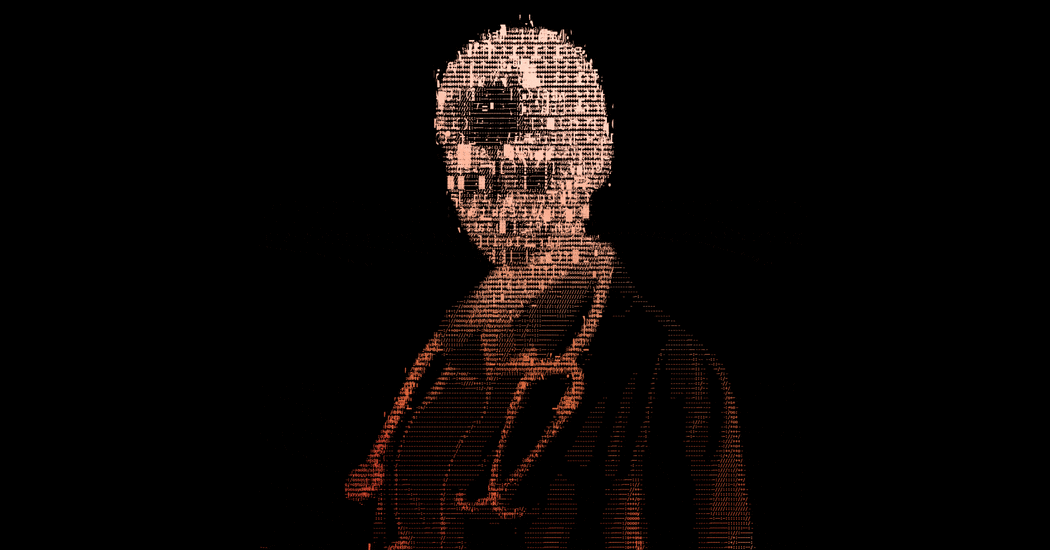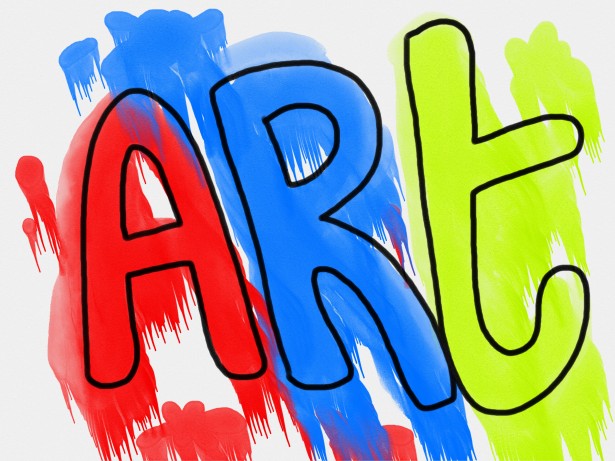There are times when the diagnosis announces itself as the patient walks in, because the body is, among other things, a text. I’m thinking of the icy hand, coarse dry skin, hoarse voice, puffy face, sluggish demeanor and hourglass swelling in the neck — signs of a thyroid that’s running out of gas. This afternoon the person before me in my office isn’t a patient but a young physician; still, the clinical gaze doesn’t turn off, and I diagnose existential despair.
Let’s not call this intuition — an unfashionable term in our algorithmic world, although there is more to intuition than you think (or less than you think), because it is a subconscious application of a heuristic that can be surprisingly accurate. This physician, whose gender I withhold in the interest of anonymity and because the disease is gender-neutral, is burned out in what should be the honeymoon of a career. Over the years, I have come to recognize discrete passages in a medical life, not unlike in Shakespeare’s “Seven Ages of Man” — we have our med-school equivalent of “the whining schoolboy with his satchel and shining morning face” and the associate professor “jealous in honor, sudden and quick in quarrel.” But what I see in my colleague is disillusionment, and it has come too early, and I am seeing too much of it.
Does this physician recall sitting before me as an idealistic first-year medical student, keen to take the world in for repairs? It was during those preclinical years that the class learned to use the stethoscope, the ophthalmoscope and the tendon hammer, to percuss the body, sounding out its hollows, the territorial boundaries of lung and liver. After the preclinical come the two clinical years, though I think of those phases these days as precynical and cynical. When students arrive on the wards full time, white coats packed with the aforementioned instruments, measuring tape, tuning fork, flashlight and Snellen eye chart, they are shocked to find that the focus on the ward doesn’t revolve around the patients but around the computers lining the bunkers where students, residents and attending physicians spend the majority of their time, backs to one another. All dialogue among them and other hospital staff members — every order, every lab request and result — must pass through this electronic portal, even if the person whose inbox you are about to overload is seated next to you.
In America today, the patient in the hospital bed is just the icon, a place holder for the real patient who is not in the bed but in the computer. That virtual entity gets all our attention. Old-fashioned “bedside” rounds conducted by the attending physician too often take place nowhere near the bed but have become “card flip” rounds (a holdover from the days when we jotted down patient details on an index card) conducted in the bunker, seated, discussing the patient’s fever, the low sodium, the abnormal liver-function tests, the low ejection fraction, the one of three blood cultures with coagulase negative staph that is most likely a contaminant, the CT scan reporting an adrenal “incidentaloma” that now begets an endocrinology consult and measurements of serum cortisol.
The living, breathing source of the data and images we juggle, meanwhile, is in the bed and left wondering: Where is everyone? What are they doing? Hello! It’s my body, you know!
My young colleague slumping in the chair in my office survived the student years, then three years of internship and residency and is now a full-time practitioner and teacher. The despair I hear comes from being the highest-paid clerical worker in the hospital: For every one hour we spend cumulatively with patients, studies have shown, we spend nearly two hours on our primitive Electronic Health Records, or “E.H.R.s,” and another hour or two during sacred personal time. But we are to blame. We let this happen to our trainees, to ourselves.
How we salivated at the idea of searchable records, of being able to graph fever trends, or white blood counts, or share records at a keystroke with another institution — “interoperability”! — and trash the fax machine. If every hospital were connected, we would have a monster database, Big Data that’s truly big and that would allow us to spot trends in disease so much earlier and determine best practice and predict complications. But we didn’t quite get that when, as part of the American Recovery and Reinvestment Act of 2009, $35 billion was eventually steered toward making medicine paperless.
My A.T.M. card is amazing: I can get cash and account details all over America and beyond. Yet I can’t reliably get a patient record from across town, let alone from a hospital in the same state, even if both places use the same brand of E.H.R., for reasons that are only partly explained by software that has been customized for each site. This is not like sending around a standard Word file. And so, too often the record comes by fax.
What the E.H.R. has done is help reduce medication errors; it is a wonderful gathering place for laboratory and imaging information; the notes are always legible. But the leading E.H.R.s were never built with any understanding of the rituals of care or the user experience of physicians or nurses. A clinician will make roughly 4,000 keyboard clicks during a busy 10-hour emergency-room shift. In the process, our daily progress notes have become bloated cut-and-paste monsters that are inaccurate and hard to wade through. A half-page, handwritten progress note of the paper era might in a few lines tell you what a physician really thought. (A neurosurgeon I once worked with in Tennessee would fill half the page with the words “DOING WELL” in turquoise ink, followed by his signature. If he deviated from that, I knew he was very worried and knew to call him.) But now, with a few keystrokes, you can populate your note with all the listed diagnoses, all the medications, all the labs, all the radiology reports, pages and pages of these, as well as enough “smart phrases” — “.EXT2” might spit out “Extremities-2+ pedal edema, normal pulses” — to allow you to swear you personally examined the patient from head to foot and personally took all the elements of the history, personally did a physical exam separate from the admitting physician that would put Sir William Osler to shame, all of which make it possible to bill at the highest level for that encounter (“upcoding”).
As a result, so much of the E.H.R., but particularly the physical exam it encodes, is a marvel of fiction, because we humans don’t want to leave a check box empty or leave gaps in a template. Over the years, I have met one-legged patients with “pulses intact in both feet” and others with “heart sounds normal, no murmur or gallop” whose mechanical heart valve’s clicks and murmurs are so loud that the patient in the next bed demands earplugs. For a study, my colleagues and I at Stanford solicited anecdotes from physicians nationwide about patients for whom an oversight in the exam (a “miss”) had resulted in real consequences, like diagnostic delay, radiation exposure, therapeutic or surgical misadventure, even death. They were the sorts of things that would leave no trace in the E.H.R. because the recorded exam always seems complete — and yet the omission would be glaring and memorable to other physicians involved in the subsequent care. We got more than 200 such anecdotes. The reason for these errors? Most of them resulted from exams that simply weren’t done as claimed. “Food poisoning” was diagnosed because the strangulated hernia in the groin was overlooked, or patients were sent to the catheterization lab for chest pain because no one saw the shingles rash on the left chest.
I worry that such mistakes come because we’ve gotten trapped in the bunker of machine medicine. It is a preventable kind of failure. Our $3.4 trillion health care system is responsible for more than a quarter of a million deaths per year because of medical error, the rough equivalent of, say, a jumbo jet’s crashing every day. Much of that is a result of poorly coordinated care, poor communication, patients falling through the cracks, knowledge not being transferred and so on, but some part of it is surely from failing to listen to the story and diminishing skill in reading the body as a text.
Five years ago, I experienced a sudden asthma attack while visiting another city. The E.R. physician was efficient, the exam adequate. The nurse came in regularly, but not to visit me so much as the screen against the wall. Her back was to me as she asked, “On a scale of 1 to 10, with 10 being great difficulty breathing …?” I saw her back three more times before I left. My visit recorded in the E.H.R. would have exceeded all the “Quality Indicators,” measures that affect reimbursement and hospital ratings. As for my experience, it was O.K., not great. I received care but did not feel cared for.
A senior colleague who was hospitalized for a longer spell, a person whose scientific and technological discoveries have helped transform care in virtually every hospital, told me with some chagrin that during his stay, the only people who got to know him as an individual human being were the nursing assistant and the housekeeper. The nurses, through no fault of theirs, were tethered to the COWs — Computers on Wheels — into which they entered data about him. But what, he asked, if it had been the other way around? What if the computer gave the nurse the big picture of who he was both medically and as a person? What if it reminded the nurse, because it was post-op Day 6 and his white count was rising, to check the surgical wound and the puncture sites where intravenous fluid was administered? What if the top screen reminded the nurse about his family members, his life outside this room and his unique concerns? What if it gave the nurse specific insights on how he was handling his suffering and suggested a strategy to support him?
For all the effort that goes into data gathering and entering, too often the data is ignored. One of my brothers, a professor at M.I.T. whose current interest in biomedical engineering is “bedside informatics,” marvels at the fact that in an I.C.U., a blizzard of monitors from disparate manufacturers display EKG, heart rate, respiratory rate, oxygen saturation, blood pressure, temperature and more, and yet none of this is pulled together, summarized and synthesized anywhere for the clinical staff to use. The physician or the nurse walks in and looks at 10s of seconds of information, a snapshot at that moment. What these monitors do exceedingly well is sound alarms, an average of one alarm every eight minutes, or more than 180 per patient per day. What is our most common response to an alarm? We look for the button to silence the nuisance because, unlike those in a Boeing cockpit, say, our alarms are rarely diagnosing genuine danger.
The biggest price for “digital medicine” is being paid by physicians like the sad case seated before me, who is already considering jumping to venture capital or a start-up, not because that is where the heart is but because it’s a place to bail out to. By some estimates, more than 50 percent of physicians in the United States have at least one symptom of burnout, defined as a syndrome of emotional exhaustion, cynicism and decreased efficacy at work. It is on the increase, up by 9 percent from 2011 to 2014 in one national study. This is clearly not an individual problem but a systemic one, a 4,000-key-clicks-a-day problem. The E.H.R. is only part of the issue: Other factors include rapid patient turnover, decreased autonomy, merging hospital systems, an aging population, the increasing medical complexity of patients. Even if the E.H.R. is not the sole cause of what ails us, believe me, it has become the symbol of burnout.
Burnout is costly. My colleague at Stanford, Tait Shanafelt, a hematologist and oncologist who specializes in the well-being of physicians, is Stanford Medicine’s first chief wellness officer. His studies suggest that burnout is one of the largest predictors of physician attrition from the work force. The total cost of recruiting a physician can be nearly $90,000, but the lost revenue per physician who leaves is between $500,000 and $1 million, even more in high-paying specialties. Turnover begets more turnover because those left behind feel more stress. Physicians who are burned out make medical errors, and burnout can be infectious, spreading to other members of the team.
I hold out hope that artificial intelligence and machine-learning algorithms will transform our experience, particularly if natural-language processing and video technology allow us to capture what is actually said and done in the exam room. The physician focuses on the patient and family, and if there is a screen in the room, it is to summarize or to share images with the patient; by the end of the visit, the progress notes and billing are done. But A.I. applications will help us only if we vet all of them for their unintended consequences. We need sufficient regulatory scrutiny so that we don’t have debacles like that of Theranos, a company that claimed it could perform comprehensive lab tests from just a few drops of blood. Technology that is not subject to such scrutiny doesn’t deserve our trust, nor should we ever allow it to be deeply integrated into our work.
Starting with good data is critical for medical applications of A.I. and machine learning. The messy nature of medical data, of the E.H.R., makes the task difficult. Garbage in begets garbage out — sanitized, pretty, color-coded garbage, but garbage nonetheless. Advances in pattern recognition applied to X-rays and CT scans and retinal scans will be very helpful aids to the clinician. But as with any lab test, what A.I. will provide is at best a recommendation that a physician using clinical judgment must decide how to apply.
I remind my young colleague that no one else can fulfill that final role: If data scientists complain about “messy data,” then there is nothing messier than an emergency meeting with a seriously ill patient when the information on what preceded this moment emerges in dribbles, and all the while we need to make a provisional diagnosis, start therapy, then make quick decisions as the disease evolves and recalibrate with more story from the patient, or from the firefighters who found the bottles of medication by the patient’s side, or from the friend or family member who suddenly shows up and mentions the sneezing parakeet, or from the lab numbers that come back. True clinical judgment is more than addressing the avalanche of blood work, imaging and lab tests; it is about using human skills to understand where the patient is in the trajectory of a life and the disease, what the nature of the patient’s family and social circumstances is and how much they want done.
The seriously ill patient has entered another kingdom, an alternate universe, a place and a process that is frightening, infantilizing; that patient’s greatest need is both scientific state-of-the-art knowledge and genuine caring from another human being. Caring is expressed in listening, in the time-honored ritual of the skilled bedside exam — reading the body — in touching and looking at where it hurts and ultimately in localizing the disease for patients not on a screen, not on an image, not on a biopsy report, but on their bodies.
I recall an occasion when we were on rounds seeing a patient, and suddenly a vile odor filled the air. Time stood still until an earthy and wonderful nurse said: “Do you all smell poop? Let’s fix that!” and stepped forward, and we did, too, rolled up sleeves and learned from a master, with minimal fuss and minimal embarrassment to the patient, how to take care of something that a keyboard won’t do for you, what no algorithm will sanitize. Medicine is messy and complicated, because humans are messy and complicated. That is why I love it. And what all of us in the trenches — housekeepers, nurses, nursing assistants, therapists, doctors — have in common is that humanity. We came to this for many reasons, but it sobers me how many people came because they had a sense of calling, because they genuinely care.
So let’s not be shy about what we do and ought to do and must be allowed to do, about what our patients really need. As he was nearing death, Avedis Donabedian, a guru of health care metrics, was asked by an interviewer about the commercialization of health care. “The secret of quality,” he replied, “is love.”
By ABRAHAM VERGHESE
https://www.nytimes.com/interactive/2018/05/16/magazine/health-issue-what-we-lose-with-data-driven-medicine.html
Source link


